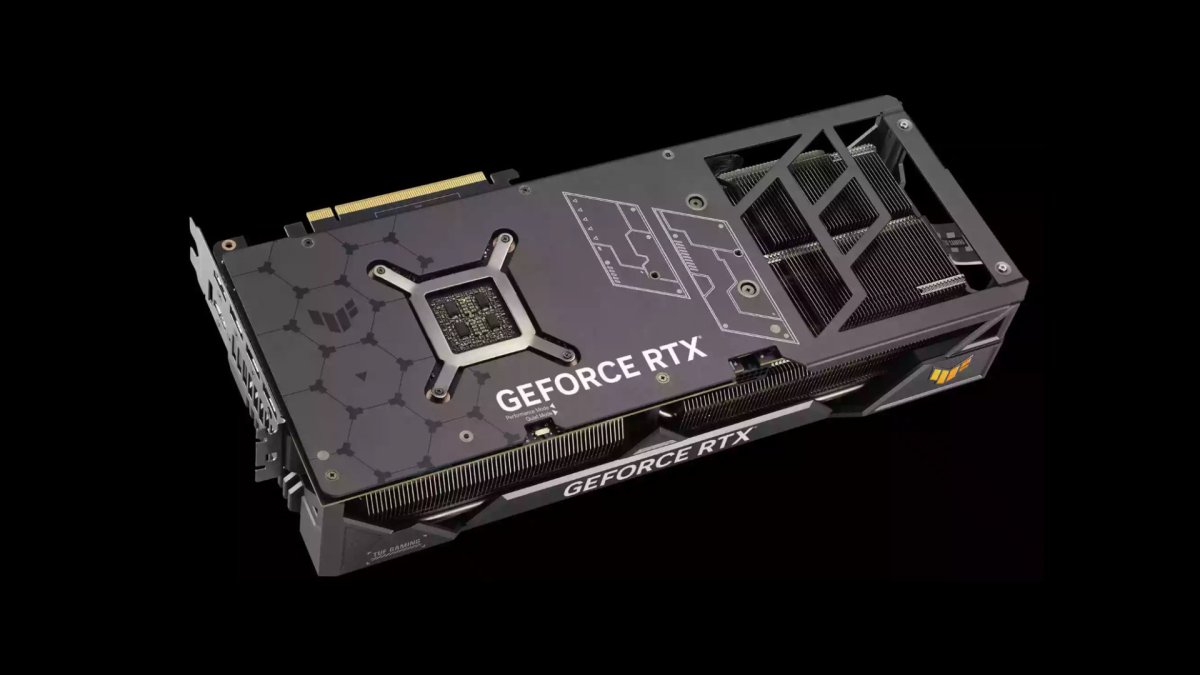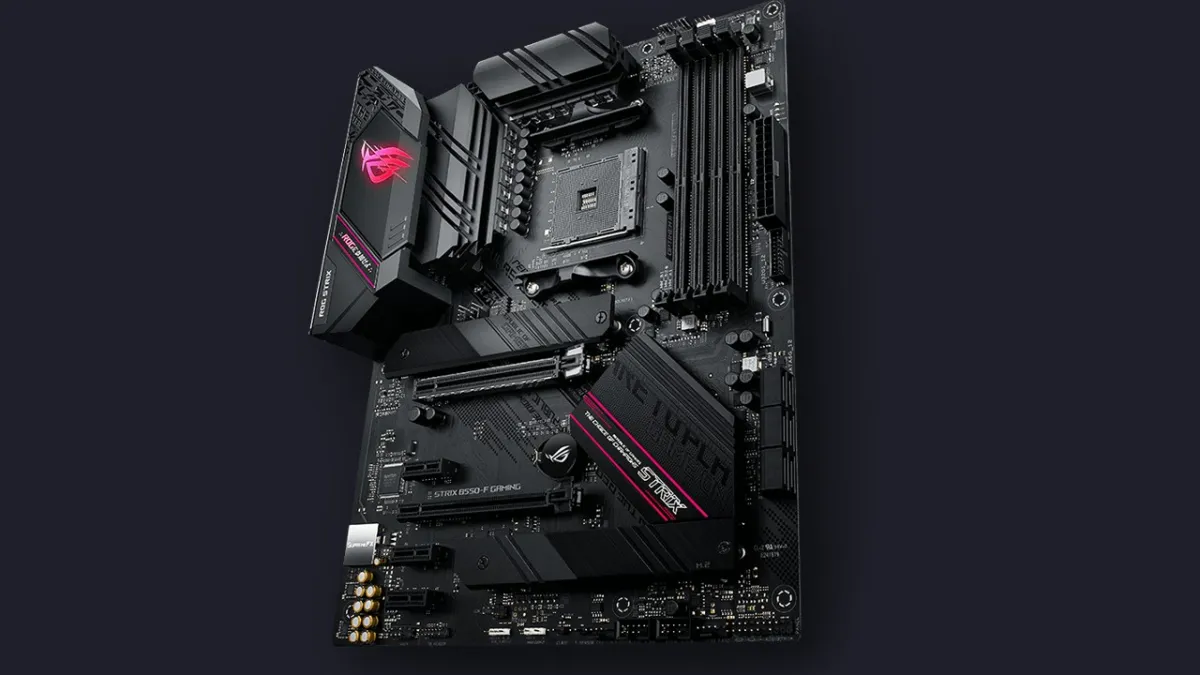Nvidia announced the potent RTX 40 Series at its GTC event on September 20. Unsurprisingly, the RTX 4090, 4080 16GB, and 4080 12GB Founder’s Edition models received the limelight during the event. It’s of no surprise that Nvidia’s AIB (add-in board) partners followed closely behind with reveals of custom RTX 40 Series models featuring massive cooler designs, overclocked performance, and blinged out looks.
You’ll be able to get an RTX 40 Series graphics card partner model from most of the usual manufacturers. The list includes ASUS, MSI, Gigabyte, PNY, Zotac, Colorful, Inno3D, Palit, Galax, Yeston, and Gainward to name the major players. You’ll notice EVGA is absent from the list, and that’s because it announced an exit from the graphics card market just last week.
All announced RTX 40 Series graphics card partner models
The available designs from pretty much all of the partners look really sleek this time around. Gone are those cheap plastic designs from the early 2010s. It’s good to see you’ll get something worth showing off for the enormous MSRPs you’ll need to deal with.
As a reminder, the RTX 4090 starts at $1,599 USD, the RTX 4080 16 GB starts at $1,199 USD, and the RTX 4080 12 GB starts at $899. Those are some big increases from the previous generation, so we hope it accounts for the AIB markups seen with the RTX 30 Series. MSRP should be a realistic price and not exist for marketing purposes. As of now, no partner pricing has been announced.
We still don’t know any pricing for partner models, but you can expect the usual tier structure from each brand. There are some more plain models, but most of these designs do look pretty high end. We’ve rounded up some pictures and details of the unique designs to give you a general idea of what you can get from the RTX 40 Series. We’ve also included links to each company’s full press release for the full lineups.
Some of the press releases are also light on specs, but we expect there will be some hefty overclocks on some of these models. More should be revealed closer to the actual launch dates for each class of card. We’ve excluded Yeston in this coverage since it’s only shipping to Chinese markets for now.
Gigabyte and Aorus
There’s a mix of standard Gaming and Windforce RTX 4090 cards alongside Gigabyte’s more premium Aorus Master. The marketing isn’t as clear as most would like at this point, but we can easily surmise the Master card will be the top dog. It has a 3.5 or four slot design, a programmable screen on the side, halo RGB rings around the fans. If you want something with less visual flair and a lower price, the Gaming model will do the trick.
All of the models look to use a full metal frame design and similar cooler since these are such demanding, hefty cards. Gigabyte also advertises cooling improvements, and there’s also a vapor chamber to cover the GPU die. However, you’ll need to check your PSU or see if you can get an adapter for the 16-pin power cable.
More info should be available soon, but you can see the renders and selling points in greater detail here.
ASUS and ROG
As for ASUS, there will be the usual mix of ROG and TUF lines. This is a case where the flagship models will only be available first, so more affordable options will likely come later. Fortunately, ASUS provided more information in its press release if you want to see exact dimensions. Spoiler alert, it’s huge.
The frame and housing is all metal to support the weight, and there’s an anti-sag support bracket built into the design. You’ll need a 16-pin power connector and the Strix 4090 is able to draw at least 500W, though the dual BIOS switch will let you keep things tame if you don’t want to use the extreme performance mode. ASUS also advertises improved cooling over the previous generation technologies. Again, the GPU is cooled by a vapor chamber. You’ll see this is a common theme for the RTX 40 Series.
The ROG design brings a somewhat busy, but still sleek looking card to the market. There’s plenty of RGB, which can be programmed in ASUS’ software or Corsair’s iCUE.
As for the TUF model, it shares similar characteristics to the ROG Strix model, albeit with reasonable cost cutting measures and lower clock speeds to be more mainstream. Design wise, it shares a similar aesthetic to the RTX 30 Series TUF models, which we found to be of excellent quality.
The frame is metal, but there’s no explicit mention of an anti-sag bracket. Fortunately, it benefits from a vapor chamber just like the ROG model, and you’ll be able to toggle a performance and quiet mode switch. ASUS notes the TUF model isn’t as long as the Strix, but it is thicker to help it fit into different cases. Lastly, there’s a touch of RGB on these cards as well.
ASUS mentions the 4080 models briefly, but didn’t provide any pictures. Interestingly enough, the ROG Strix 4080 16 GB model will also come with a vapor chamber to deal with the heat generated from higher clock speeds. There will likely just be traditional heat pipe contact designs and smaller coolers for the TUF 4080 16GB and both the Strix and TUF 4080 12GB models, which will be fine for the lower heat output. The majority of the other 4090 features, such as RGB and general build quality, should pass down to the 4080 models.
You can read the full press release here.
MSI
We can see a trend now with plenty of premium designs for the RTX 40 Series. MSI has the SUPRIM series that pulls out all the stops and the Gaming series that offers a good balance of attractive features and performance. However, there’s also the standard Ventus series that will hopefully meet MSRP. If these designs seems familiar, that’s because the aesthetic styling is similar to MSI’s 30 Series designs.
Function wise, these cards are very different from the previous gen. The heatsinks and overall thickness of the cards are greater, and MSI notes that all of its 4090 and 4080 16 GB cards feature vapor chambers. The SUPRIM series 4090 and 4080 16 GB models are massive at 3.75 slots thick, while the 4080 12 GB is 3.5 slots thick. The gaming series 4090 is 3.75 slots thick, the 4080 16 GB is 3.25 slots thick, and the 4080 12 GB is 3 slots thick. There will only be Ventus models for the 4080s, which will be 3 slots thick for the 16 GB and 2.5 slots for the 4080 12 GB.
Lastly, we’ll note the SUPRIM Liquid 4090 since this particular class of card is a perfect candidate for liquid cooling. This model features a hybrid cooling design where the GPU and memory heat is largely circulated out to the radiator, but there’s also a blower-style fan on the card to push heat directly out of the back of the case. Those with small form factor cases will appreciate a design like this, along with the fact that it’s only about 2 slots thick.
There are also claims of air cooling performance improvements to keep the cards operating cool and quiet. However, you’ll be able to dial up fan speeds and clock speeds using the built-in dual BIOS switch on the SUPRIM and Gaming series if you wish. MSI hasn’t provided the full specs for its designs just yet, so you’ll need to check back for final dimensions, power consumption, etc. We’re also not sure which designs will come with accessories, such as support brackets.
MSI plans to announce more 40 Series designs in the future. You can check out the press release here, which also lists additional specs for each model.
Zotac
There are three designs so far from Zotac, and all of the models look high end. These include the AMP Extreme AIRO as the top card, the Trinity OC, and the non-OC Trinity. We got an early look at Zotac models thanks to a leak last week, and the rounded shroud design drew a lot of attention. It’s now clear that all three models share the same shape, which is certainly unique.
Interestingly, Zotac only lists 4090 models as of now so we’ll take a look at that. Just like the other brands, the cooling designs for the 4090 models include massive heatsinks, vapor chambers, and improved air cooling technologies. All three models are 3.5 slots thick. Power delivery also requires a 16-pin connector, but Zotac ships an adapter along with a support stand to get you going. Also of note, the AMP Extreme Airo comes with a dual bios switch for a high performance mode or silent mode. Zotac also claims its 40 Series cards feature improved air cooling technology for keeping things cool and quiet.
You can find the main press release here for more info.
PNY
This manufacturer keeps things simple with one model per class of card for now. PNY call its 40 Series products the “VERTO” family of cards, or XLR8, as you’ll see on the packaging. It’s not clear what this means as of now so we’ll just refer to these as the XLR8. The designs look sleek, and feature an “X” style pattern of RGB on the fan side and an illuminated logo on the side.
The cards are 3.5 slots thick for the 4090 and 4080 16 GB models, while the 12 GB 4080 is 3.3 slots thick. Aside from this, there isn’t a whole lot of specific information available at this time.
You can find the press release here.
Inno3D
There are four designs from Inno3D, all limited to just the 4090 for now. There are plenty of air cooled 40 Series cards about to hit the market, but Inno3D will, perhaps appropriately, bring more liquid-cooled options. The models include the Frostbite, Black, X3, and the X3 OC. The Frostbite is a water block model for custom liquid-cooled builds while the Black is a liquid-cooled design with an AIO with an attached radiator. Each of the liquid-cooled options are 2.3 slots thick. The X3 and X3 OC are the air-cooled designs, which look impressive and built for the task. The air-cooled designs are 3 slots thick.
Just like with the other brands, we can see Inno3D uses vapor chambers, massive heatsinks, aluminum backplates, flow-through designs, the works. The company also claims it has improved cooling technologies for both air and liquid models.
You can find the press release here.
Colorful
You’ll be able to choose between three models from Colorful, and the premiere designs look stunning. The Vulcan model represents the flagship air cooling design, Neptune encompasses AIO liquid cooling, and BattleAx represents base class performance. The press release language is somewhat confusing, but we believe Colorful will offer each design for the 4090, 4080 16 GB, and 4080 12 GB. Detailed specifications are not yet available for these models, but Colorful did put forth some highlight info in the initial press release.
The Vulcan design looks mean in black and sports some silver accents. It looks to be about the same thickness as the models from the other brands. The marketing emphasizes an improved cooling design thanks to revised fans. There’s also two RGB stripes, but the main bling is an attachable LCD screen that can be mounted vertically or horizontally. A USB dock also comes packaged with the LCD screen. You can display monitoring figures, custom images, GIFs, etc.
The Neptune design is all white, equipped with an AIO liquid-cooling solution that features a 240mm radiator. The card measures two slots thick, and has a copper baseplate for GPU and memory contact. There are two RGB strips on the top, and more RGB on the side.
The BattleAx is far more tame in design and will clearly be the most affordable of the bunch. Colorful didn’t provide any specs or details really, so we can only deduce that it will perform to the base Nvidia spec. It’s still a large card though, just nothing fancy to speak of. And ironically, there’s no RGB, which doesn’t make it very… colorful.
Colorful also announced that Advanced and Ultra models are planned for a later release.
Check back here at the product listings for more info at a later date.
Galax
Next up is Galax, which has a single aesthetic design for all three of its models. These are split into the “SG” and “ST” models for each card class, with the “SG” models featuring higher clock speeds. The company calls the 40 Series its “Serious Gaming” family, which is an interesting, but also accurate choice of language given that all of these cards will seem like overkill for mainstream gamers.
The thermal solutions vary per class, with the RTX 4090 featuring a vapor chamber and a 3.5 slot thick design. The 4080 models range between 3-3.3 slots thick. Galax also totes improved air cooling over the previous gen. There’s no mention of a vapor chamber for the 4080 16 GB and 12 GB models, however, Galax does bring something else that’s interesting to the mix. All models come with an attachable fourth fan that goes on the backplate to improve air passthrough. It also happens to look cool, and will let you brag that you’ve got the thickest card out there. XFX won’t like that competition against its THICC series.
Galax 40 Series cards also come with one-click OC, RGB all over, a power adapter, and an RGB-equipped support stand.
You can find more information here about each card.
Gainward
Gainward has released more info about its 40 Series lineup, and the designs contrast one another with emphasis on stealth and radiance. Those who like blacked out components will appreciate the Phantom cards, while the Phoenix model sports RGB galore. There’s a total of three cards available, which are the Phantom, Phantom Reunion, and the Phoenix. Details are still limited so you’ll want to check back later for more if interested. The 4090 Phantom cards are the only models listed thus far. According to the press release, Gainward will only offer the RTX 4090 in the Phantom design, while the Phoenix and Phantom models will both be available for the RTX 4080 variants. The “GS” branding also seems to indicate OC models.
Looking at the 4090 Phantom, it features the same design characteristics noted with other brands. There’s a vapor chamber cooling the GPU, a massive cooler that makes the card 3.5 slots thick, a metal backplate for strength and extra passive cooling, a 16-pin power connector and improved cooling technologies to keep things cool and quiet. There’s RGB on the side of the card to highlight the branding as well. Gainward seems to have some very competitive cards, even if it is one of the more obscure Nvidia partners.
You can see the limited press release here. More info is likely to come near launch.
As we can see, the RTX 40 Series partner models feature some sleek and attractive designs in many flavors. Cooling is also top notch in most cases. Every 4090 model appears to use a vapor chamber, and many 4080s seem to get that benefit as well. That undoubtedly has to do with the density of the chips paired with the high power consumption. The coolers are also massive, so you’ll need to see if the card you want even fits in your case or if it’s time for a new build.
As for the power supply requirement concerns, it’s really too early to say if you need the new PCIe spec, or if adapters will do just fine. You’ll definitely want to assess whether the total output of your PSU is adequate for the RTX 40 Series though. We have some PSU recommendations if you’re in need of an upgrade.
At the very least, these look like well-built graphics cards, which should be the case given the hefty MSRPs. As a reminder, no partner pricing has been revealed yet. However, the large price hikes should allow partners to sell at least some RTX 40 Series models at or near MSRP this time around. If not, you might try to hunt down the Founder’s Edition Nvidia design which will stick to MSRP.
Actual performance, pricing, and cooling quality remain to be determined. You’ll definitely want to look for independent reviews if interested in specific partner models of the RTX 40 Series. Also keep in mind that AMD shows off its next-gen Radeon cards on November 3.

















Published: Sep 26, 2022 09:00 am